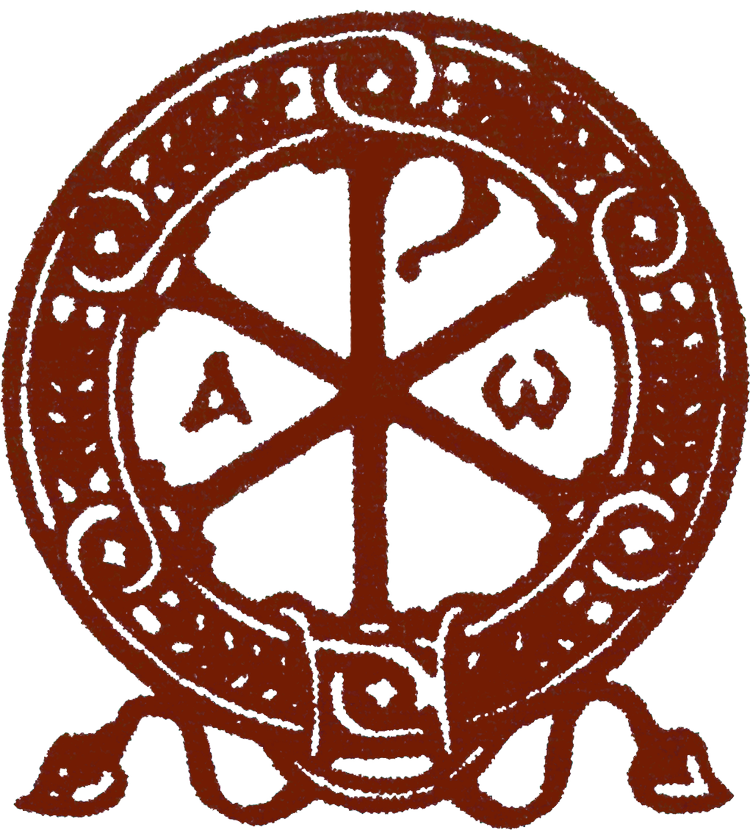Holy Fathers on Veneration of Icons.
According to Christian Orthodox Tradition the first "images" or icons were painted by Apostle and Evangelist St. Luke - and some of these survive to this day and are greatly venerated. In addition, the walls of the Roman catacombs provide a dazzling and moving display of sacred art: these fresco-icons depict Christ and the truths of our Faith from Scripture and Tradition; not surprisingly, they also show the Mother of God holding the Christ-child, certain early martyrs, and various Sacraments (such as the Eucharist, Baptism, etc.). Some of these date from the end of the first century, when certain Apostles and disciples were still living. It is said that it would be possible for a non-Christian to understand many deep things about Christianity simply by walking through these wonderful underground passageways. One modern scholar has made the interesting observation that these early icons show how the first Christians "were accustomed to consider themselves not so much as individuals but rather as members of the Church." (The Roman Catacombs and Their Martyrs).
And so it was for seven centuries until, in the year 726, a vicious destruction of icons broke out, waged by people (including the Emperor) who did not fully understand the doctrine of Christ and the Christian attitude towards created matter. Icons were burned, frescoes were white-washed, and those that defended them were imprisoned and sometimes put to death. This first phase of persecution was stopped by the Empress Irene in 780, but a new attack which began in 815, did not end until another Empress, Theodore, ended the persecutions once and for all, in 843--an event still commemorated on the first Sunday of Lent as "The Triumph of Orthodoxy."
In between these two great persecutions the Seventh (and last) Ecumenical Council was held, at Nicea in 787. This Council of Holy Fathers not only defended the use of icons in churches and homes, but proclaimed the necessity of having them. Why?
One of the arguments used by the icon-haters (iconoclasts) was that images of any kind were forbidden in Scripture and therefore icons are nothing more than idols. They also tended to believe that created matter was in some way evil or defiled, and holy things could not be represented by matter; to be truly spiritual, they believed, a thing should be invisible, or at least non-representational. This idea was actually a subtle attack on the doctrine of Christ's Incarnation, and therefore had to be condemned as a heresy.
One of the greatest defenders of icons, the Holy Father St. John of Damascus (see "Orthodox America," Vol. II, no. 1), gave an eloquent explanation of icons in three treatises called Against Those Who Attack The Divine Images. Very briefly summarized here, St. John expresses the consistent thought of the Church from the time of the Apostles to the Seventh Council.
First he reminded his readers that "no created thing can be adored in place of the Creator." God forbade the making of idols he says, because "it is impossible to make an image of the immeasurable...invisible God." Yet at the same time, "under the Old Covenant God commanded images to be made: first the tabernacle, and then everything in it"--which included images of angels surmounting the Ark. These images were not idols because they were not worshipped.
Secondly, he explains how God can be portrayed now because He took upon Himself flesh and became man. "If we attempted to make an image of the invisible God, this would be sinful indeed," he writes, and "if we made images of men and believed them to be gods...we would be truly impious. We do neither of these things. But we are not mistaken if we make the image of God incarnate, Who was seen on earth in the flesh, associated with men, and in His unspeakable goodness assumed the nature, feeling, form, and color of our flesh."
Thirdly, he shows that we do not worship icons, for worship belongs to God alone, but we venerate or show honor to them, for the image is one thing, and the thing depicted is another," and he cites the veneration given in Scripture to the rod of Aaron, the jar of manna, and holy places like Mt. Sanai or Golgotha.
Finally, this Holy Father answers those that believe matter is in some way "bad." He begins by quoting Scripture: "And the Word became flesh and dwelt among us. It is obvious to everyone that Flesh is matter, and that it is created. I salute matter and I approach it with reverence, and I worship that through which my salvation has come. I honor it, not as God, but because it is full of divine grace and strength."
Icons in our churches and homes are, in the words of St. John "opened books to remind us of God." (indeed ,an icon is a painted image of Christ just as Scripture is a written image of the Saviour.) This is why Bishop Kallistos Ware writes in The Orthodox Church: He who lacks learning or leisure to study works of theology has only to enter a church to see unfolded before him on the walls all the mysteries of the Christian religion. If a pagan asks you to show him your faith, said John of Damascus, take him into church and place before him the icons."












